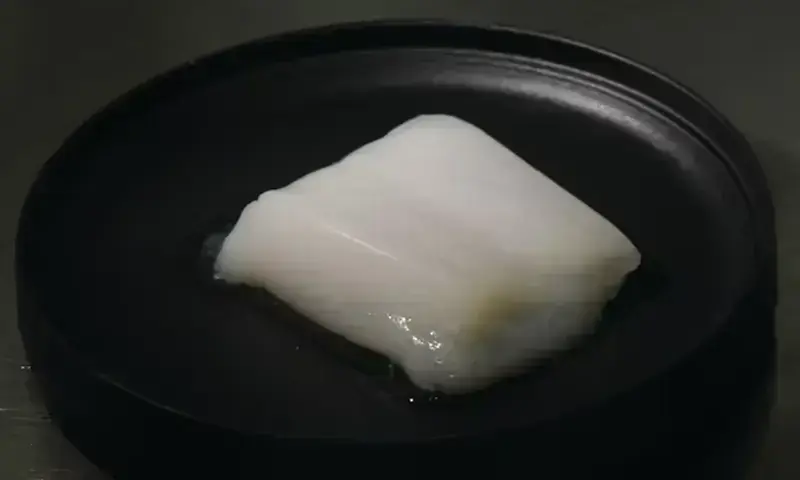A team of scientists led by Professor Seiji Takeuchi from the University of Tokyo has grown 11-gram pieces of chicken in laboratory conditions and claimed that such product may appear on the market in 5-10 years.
Nugget-sized pieces were grown using a device that supplied oxygen and nutrients through a thousand thin hollow fibers to chicken muscle cells immersed in a gel. This innovative technology allowed scientists to grow pieces of chicken that are 2 cm long and 1 cm thick.
According to the research team, the fiber bioreactor they developed paves the way for cultivating larger pieces of chicken, beef, pork, and fish in laboratory conditions. This technology also has the potential for growing functional organs, the publication reported. The Guardian .

What else should be known about this discovery?
The main obstacle to growing meat in laboratory conditions is the difficulty of delivering sufficient nutrients and oxygen (without which cells They die) to muscle cells in the thick layers of tissue. Therefore, most projects focus on growing small pieces of meat that resemble minced meat.
To move forward, Professor Takeuchi’s team built a bioreactor that holds living cells in a gel and nourishes them through thin semi-permeable fibers that permeate the material.
“One of the main problems in growing thick tissue is that the cells in the center may struggle to receive enough oxygen and nutrients, which can lead to cell death. Our system has helped solve this problem by providing internal perfusion, allowing us to grow thicker, more uniform tissue,” said Professor Takeuchi.
In an article published by the journal Trends in Biotechnology, the team described their invention, stating that growing larger and more structured pieces would allow scientists to replicate the texture and appearance of, for example, chicken breast or thigh. “Ground cultivated meat is easier to produce. But it does not fully convey the fibrous structure and taste sensations that consumers associate with conventional meat,” added the lead researcher.
So far, the hollow fibers of the artificial circulatory system have to be removed manually after the meat grows. However, scientists plan to replace them with edible cellulose fibers that can be left in and used to improve the texture of the meat.
According to Professor Takeuchi, future versions of the bioreactor may require artificial blood that carries more oxygen to the cells and helps grow larger pieces of meat.
“At first, this” meat “It will likely be more expensive than regular chicken, particularly due to material and production costs. However, we are actively developing scalable food systems and, if successful, we expect the cost to decrease significantly over time,” said Professor Takeuchi.
Meanwhile, Professor Derek Stewart from the James Hutton Institute (UK) believes that lab-grown meat can be fortified by adding zinc and selenium to the growth medium. He suggested that this could help boost the immunity of elderly people.
